ASX Glossary - A
Jump to navigation
Jump to search

| Click on term for full definition | Click here to report corrections and content addition requests |
|
AviationSafetyX and ASX Wikibase 
|
AviationSafetyX is a comprehensive aviation safety and knowledge hub, offering expertly curated articles, resources, and visual content dedicated to flight safety, air accident investigation, aircraft systems, and operational integrity. With a database exceeding 5,000 articles, it serves aviation professionals, students, and enthusiasts worldwide. Built on decades of experience, ASX blends technical precision with bold, immersive presentation to enhance aviation understanding, reduce risk, and ultimately help save lives. |
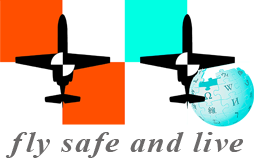
|
|
177th FW NJANG
Jersey Devils 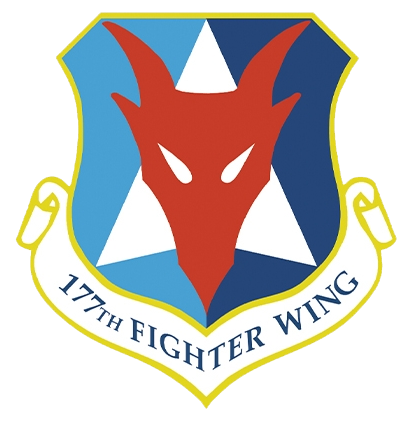
|
The 177th Fighter Wing (177 FW) of the NJANG, the Jersey Devils, currently operate F-16C Fighting Falcons out of Atlantic City's International Airport (ACY) . Tasked with air defense and homeland security, it supports both state and federal missions, including NORAD’s Aerospace Control Alert. The unit, the last operator of the Convair F-106 Delta Dart, has a proud history of combat deployments and domestic operations. |
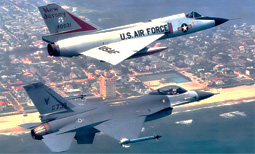
|
| Automatic Direction Finder (ADF) | A navigation device that receives radio signals from non-directional beacons (NDBs) and displays the bearing to the beacon. Pilots use the ADF for en-route navigation, approaches, and situational awareness, particularly in areas lacking modern navigation aids like GPS or VORs. |
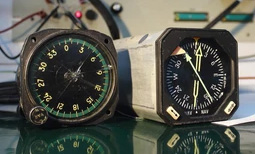
|
| Aerodynamics | The study of air movement and its interaction with solid objects, such as aircraft. Aerodynamics focuses on lift, drag, thrust, and airflow, determining how an aircraft performs and handles under various flight conditions. Effective aerodynamic design enhances fuel efficiency, speed, and safety. |
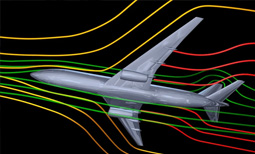
|
| Aerodrome | A location for aircraft operations, encompassing runways, taxiways, aprons, hangars, and control towers. Aerodromes range from small airstrips for general aviation to large airports with international capabilities, serving passengers, cargo, and military needs. |
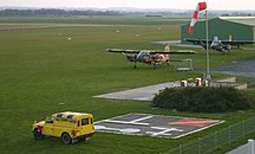
|
| Aeronautical Chart | A specialized map for pilots, detailing airspace, navigation aids, terrain, and airport data. Aeronautical charts assist in planning and executing flights, ensuring pilots avoid restricted areas and maintain safe routes. |
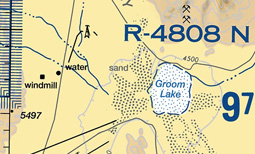
|
| Aileron | A hinged control surface on the trailing edge of an aircraft's wing. Ailerons operate in opposite directions on each wing to control the aircraft's roll, allowing it to bank or turn while maintaining lateral stability. |

|
| Air Traffic Control (ATC) | A service provided by trained personnel to direct aircraft during all phases of flight. ATC ensures safe separation between aircraft, coordinates departures and arrivals, and provides critical information like weather updates and runway conditions. |

|
| Aircraft Fire Detection System | A safety system installed in aircraft to detect and alert pilots of potential fires in the engine, cargo compartments, or cabin. It consists of sensors, alarms, and extinguishing mechanisms to mitigate fire risks and enhance passenger safety. |  |
| Airfoil | A structure designed to produce lift when air flows over it, typically used in wings, propellers, and helicopter blades. The unique shape of an airfoil maximizes lift while minimizing drag, making it essential for efficient flight. |
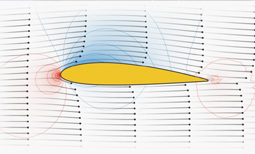
|
| Aircraft Classification | A categorization system that groups aircraft by type, weight, purpose, and performance. Examples include commercial jets, light aircraft, helicopters, drones, and gliders, each requiring specific pilot certifications and operational procedures. |
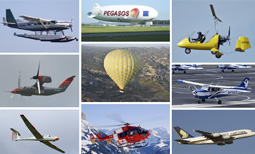
|
| Aircraft Identification | A unique code, often called a registration number or tail number, assigned to each aircraft. This identifier is used during communication with air traffic control, flight tracking, and legal documentation. |
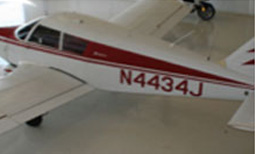
|
| Aircraft Maintenance Manual (AMM) | A detailed document provided by aircraft manufacturers outlining inspection, repair, and servicing procedures. The AMM ensures that maintenance teams follow precise standards to keep the aircraft airworthy. |

|
| Airworthiness Certificate | A document issued by aviation authorities certifying that an aircraft meets safety standards. It is required for legal operation and is renewed periodically through inspections and compliance with maintenance regulations. |
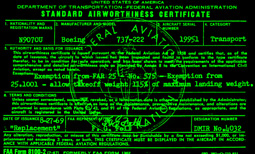
|
| Altimeter | A cockpit instrument that measures altitude by detecting changes in atmospheric pressure. Altimeters display altitude above sea level and are critical for avoiding obstacles and maintaining proper airspace separation. |
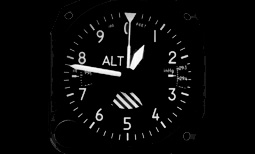
|
| Angle of Attack | The angle between the chord line of an airfoil and the relative wind. AOA directly impacts lift and drag, and exceeding the critical angle can cause a stall, making it a critical parameter for flight safety. |
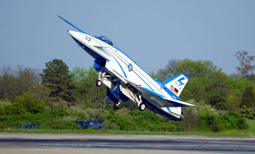
|
| Angle of Incidence | The fixed angle between an aircraft wing's chord line and the longitudinal axis of the aircraft. It is determined during design and construction to optimize lift and performance without requiring pilot adjustment |
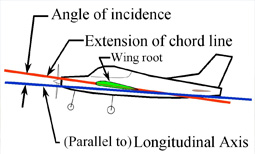
|
| Anti-Ice System | A system used to prevent the formation of ice on critical surfaces like wings, engines, and windshields. Anti-ice systems use heated surfaces, pneumatic boots, or chemical solutions to maintain safety in icy conditions. |

|
| Approach Plate | A detailed chart used in instrument flight rules (IFR) to guide pilots during an approach to a runway. It provides information on headings, altitudes, navigation aids, and missed approach procedures. |

|
| APU (Auxiliary Power Unit) | A small turbine engine located in the aircraft's tail section. The APU provides power for electrical systems and air conditioning while on the ground and assists in starting the main engines. |
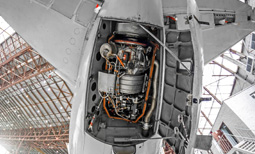
|
| Area 51/Groom Lake/R-4808 N | Area 51/Groom Lake is a highly classified U.S. Air Force facility located in southern Nevada, officially known as Homey Airport or Groom Lake. Established in 1955 for testing the Lockheed U-2 aircraft, its operations remain secretive, fueling numerous UFO conspiracy theories. The CIA publicly acknowledged its existence in 2013. Situated 83 miles northwest of Las Vegas, the area attracts tourists, especially to the nearby town of Rachel on the "Extraterrestrial Highway." |
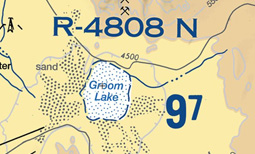
|
| Area Navigation (RNAV) | A navigation system that allows aircraft to follow direct routes between any two points, rather than being restricted to paths defined by ground-based navigation aids. RNAV improves efficiency and reduces travel time. |

|
| ARTCC (Air Route Traffic Control Center) | A facility that manages en-route air traffic in controlled airspace. ARTCC controllers ensure safe separation between aircraft during cruise phases of flight. |

|
| Aspect Ratio | he ratio of an aircraft's wingspan to its average chord (width). High aspect ratios reduce drag and improve fuel efficiency, while low aspect ratios enhance maneuverability. |
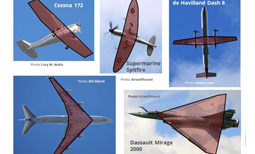
|
| Altitude | The vertical distance between an aircraft and a reference point, typically sea level or ground level. Altitude is measured using an altimeter and is categorized into pressure altitude, true altitude, and indicated altitude. |
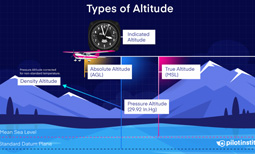
|
| Augmentor | An augmenter is an older Pratt & Whitney term for an afterburner—a secondary combustion system that injects fuel into the exhaust to boost thrust. Used in early F100-powered F-16s, it enhanced supersonic performance. The term faded as “afterburner” became standard across military engine platforms. Thanks, Matthew McKee, for the suggestion! |
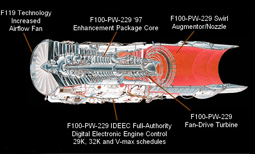
|
| Autoland | An advanced system that automates the landing process. Used in low-visibility conditions, autoland controls the aircraft's descent, flare, and touchdown, ensuring precision and safety. |
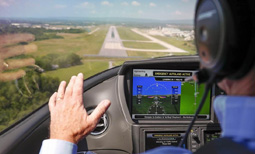
|
| Automatic Dependent Surveillance-Broadcast (ADS-B) | A surveillance technology where an aircraft broadcasts its position, speed, altitude, and other data. ADS-B improves situational awareness and enhances air traffic management.. |
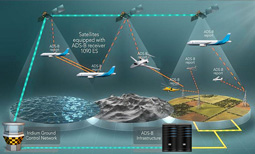
|
| Automatic Direction Finder (ADF) | A navigation aid that uses radio signals from NDBs to determine the direction of a beacon relative to the aircraft. ADF is especially useful in remote areas where GPS and other systems may not be available. |
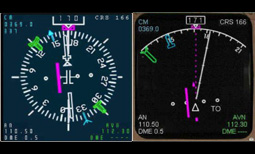
|
| Autopilot | A system that automates control of the aircraft's flight path. Autopilot maintains heading, altitude, and course, reducing pilot workload, especially during long flights or adverse weather. |
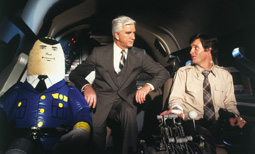
|
| Aviation Meteorology | The study of weather and its impact on aviation operations. Aviation meteorology covers phenomena such as turbulence, wind shear, icing, thunderstorms, and jet streams to ensure flight safety and efficiency. |

|
| Avionics | The electronic systems used in aircraft, including navigation, communication, and monitoring systems. Avionics advancements have revolutionized aviation, enabling precision navigation, real-time communication, and comprehensive flight data monitoring. |
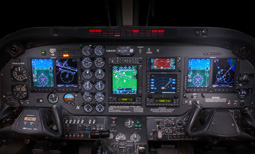
|
